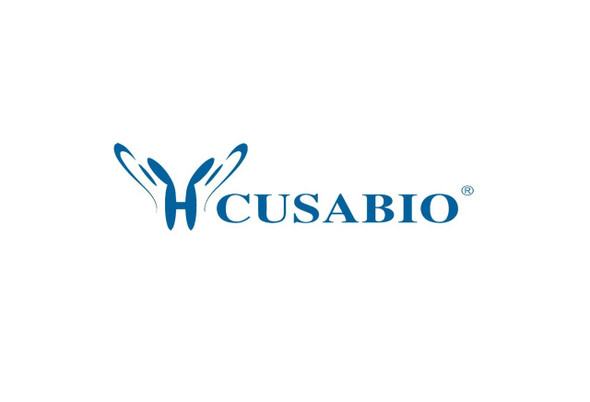Cusabio Human Recombinants
Recombinant Human Non-POU domain-containing octamer-binding protein (NONO) | CSB-EP624018HUb0
- SKU:
- CSB-EP624018HUb0
- Availability:
- 13 - 23 Working Days
Description
Recombinant Human Non-POU domain-containing octamer-binding protein (NONO) | CSB-EP624018HUb0 | Cusabio
Alternative Name(s): 54 kDa nuclear RNA- and DNA-binding protein (55 kDa nuclear protein) (DNA-binding p52/p100 complex, 52 kDa subunit) (NMT55) (p54(nrb)) () (p54nrb) (NRB54)
Gene Names: NONO
Research Areas: Epigenetics and Nuclear Signaling
Organism: Homo sapiens (Human)
AA Sequence: MQSNKTFNLEKQNHTPRKHHQHHHQQQHHQQQQQQPPPPPIPANGQQASSQNEGLTIDLKNFRKPGEKTFTQRSRLFVGNLPPDITEEEMRKLFEKYGKAGEVFIHKDKGFGFIRLETRTLAEIAKVELDNMPLRGKQLRVRFACHSASLTVRNLPQYVSNELLEEAFSVFGQVERAVVIVDDRGRPSGKGIVEFSGKPAARKALDRCSEGSFLLTTFPRPVTVEPMDQLDDEEGLPEKLVIKNQQFHKEREQPPRFAQPGSFEYEYAMRWKALIEMEKQQQDQVDRNIKEAREKLEMEMEAARHEHQVMLMRQDLMRRQEELRRMEELHNQEVQKRKQLELRQEEERRRREEEMRRQQEEMMRRQQEGFKGTFPDAREQEIRMGQMAMGGAMGINNRGAMPPAPVPAGTPAPPGPATMMPDGTLGLTPPTTERFGQAATMEGIGAIGGTPPAFNRAAPGAEFAPNKRRRY
Source: E.coli
Tag Info: N-terminal 10xHis-tagged
Expression Region: 1-471aa
Sequence Info: Full Length
MW: 59.7 kDa
Purity: Greater than 85% as determined by SDS-PAGE.
Relevance: DNA- and RNA binding protein, involved in several nuclear processes. Binds the conventional octamer sequence in double-stranded DNA. Also binds single-stranded DNA and RNA at a site independent of the duplex site. Involved in pre-mRNA splicing, probably as a heterodimer with SFPQ. Interacts with U5 snRNA, probably by binding to a purine-rich sequence located on the 3' side of U5 snRNA stem 1b. Together with PSPC1, required for the formation of nuclear paraspeckles. The SFPQ-NONO heteromer associated with MATR3 may play a role in nuclear retention of defective RNAs. The SFPQ-NONO heteromer may be involved in DNA unwinding by modulating the function of topoisomerase I/TOP1. The SFPQ-NONO heteromer may be involved in DNA non-homologous end joining (NHEJ) required for double-strand break repair and V(D)J recombination and may stabilize paired DNA ends. In vitro, the complex strongly stimulates DNA end joining, binds directly to the DNA substrates and cooperates with the Ku70/G22P1-Ku80/XRCC5 (Ku) dimer to establish a functional preligation complex. NONO is involved in transcriptional regulation. The SFPQ-NONO-NR5A1 complex binds to the CYP17 promoter and regulates basal and cAMP-dependent transcriptional activity. NONO binds to an enhancer element in long terminal repeats of endogenous intracisternal A particles (IAPs) and activates transcription. Regulates the circadian clock by repressing the transcriptional activator activity of the CLOCK-ARNTL/BMAL1 heterodimer. Important for the functional organization of GABAergic synapses. Plays a specific and important role in the regulation of synaptic RNAs and GPHN/gephyrin scaffold structure, through the regulation of GABRA2 transcript. Plays a role in the regulation of DNA virus-mediated innate immune response by assembling into the HDP-RNP complex, a complex that serves as a platform for IRF3 phosphorylation and subsequent innate immune response activation through the cGAS-STING pathway
Reference: "Purification and cDNA cloning of HeLa cell p54nrb, a nuclear protein with two RNA recognition motifs and extensive homology to human splicing factor PSF and Drosophila NONA/BJ6." Dong B., Horowitz D.S., Kobayashi R., Krainer A.R. Nucleic Acids Res. 21:4085-4092(1993)
Storage: The shelf life is related to many factors, storage state, buffer ingredients, storage temperature and the stability of the protein itself. Generally, the shelf life of liquid form is 6 months at -20?/-80?. The shelf life of lyophilized form is 12 months at -20?/-80?.
Notes: Repeated freezing and thawing is not recommended. Store working aliquots at 4? for up to one week.
Function: DNA- and RNA binding protein, involved in several nuclear processes. Binds the conventional octamer sequence in double-stranded DNA. Also binds single-stranded DNA and RNA at a site independent of the duplex site. Involved in pre-mRNA splicing, probably as a heterodimer with SFPQ. Interacts with U5 snRNA, probably by binding to a purine-rich sequence located on the 3' side of U5 snRNA stem 1b. Together with PSPC1, required for the formation of nuclear paraspeckles. The SFPQ-NONO heteromer associated with MATR3 may play a role in nuclear retention of defective RNAs. The SFPQ-NONO heteromer may be involved in DNA unwinding by modulating the function of topoisomerase I/TOP1. The SFPQ-NONO heteromer may be involved in DNA non-homologous end joining (NHEJ) required for double-strand break repair and V(D)J recombination and may stabilize paired DNA ends. In vitro, the complex strongly stimulates DNA end joining, binds directly to the DNA substrates and cooperates with the Ku70/G22P1-Ku80/XRCC5 (Ku) dimer to establish a functional preligation complex. NONO is involved in transcriptional regulation. The SFPQ-NONO-NR5A1 complex binds to the CYP17 promoter and regulates basal and cAMP-dependent transcriptional activity. NONO binds to an enhancer element in long terminal repeats of endogenous intracisternal A particles (IAPs) and activates transcription. Regulates the circadian clock by repressing the transcriptional activator activity of the CLOCK-ARNTL/BMAL1 heterodimer. Important for the functional organization of GABAergic synapses. Plays a specific and important role in the regulation of synaptic RNAs and GPHN/gephyrin scaffold structure, through the regulation of GABRA2 transcript. Plays a role in the regulation of DNA virus-mediated innate immune response by assembling into the HDP-RNP complex, a complex that serves as a platform for IRF3 phosphorylation and subsequent innate immune response activation through the cGAS-STING pathway
Involvement in disease: Mental retardation, X-linked, syndromic, 34 (MRXS34)
Subcellular Location: Nucleus, Nucleus, nucleolus, Nucleus speckle
Protein Families:
Tissue Specificity: Heart, brain, placenta, lung, liver, skeletal muscle, kidney and pancreas. Also found in a number of breast tumor cell lines.
Paythway:
Form: Liquid or Lyophilized powder
Buffer: If the delivery form is liquid, the default storage buffer is Tris/PBS-based buffer, 5%-50% glycerol. If the delivery form is lyophilized powder, the buffer before lyophilization is Tris/PBS-based buffer, 6% Trehalose, pH 8.0.
Reconstitution: We recommend that this vial be briefly centrifuged prior to opening to bring the contents to the bottom. Please reconstitute protein in deionized sterile water to a concentration of 0.1-1.0 mg/mL.We recommend to add 5-50% of glycerol (final concentration) and aliquot for long-term storage at -20?/-80?. Our default final concentration of glycerol is 50%. Customers could use it as reference.
Uniprot ID: Q15233
HGNC Database Link: HGNC
UniGene Database Link: UniGene
KEGG Database Link: KEGG
STRING Database Link: STRING
OMIM Database Link: OMIM









